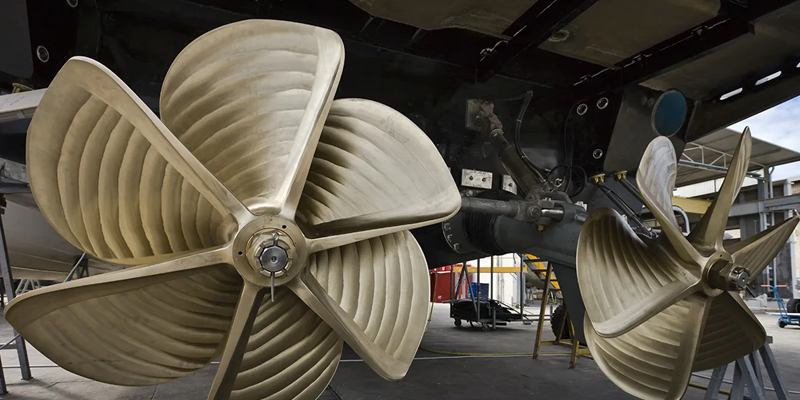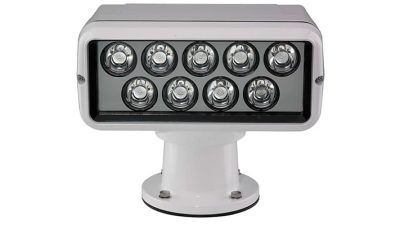One of the critical considerations for any boat owner is the correct positioning of the propeller in relation to the hull. The depth at which your prop extends below the boat directly affects performance, fuel efficiency, and overall handling. This guide will explain how far a propeller should extend below a boat, and why getting this right is crucial for optimal boating.
Understanding Propeller Positioning
The propeller’s position is influenced by several factors, including the type of boat, engine setup, and the specific conditions in which you operate your vessel. However, the fundamental principle remains the same: the propeller must be deep enough to function effectively without causing cavitation or reducing thrust.
To achieve the right depth, factors like the transom height and the use of a jack plate play a significant role in adjusting the propeller’s position. Keeping the lower unit submerged enough to maintain proper water pressure to the engine’s cooling system is essential, while still minimizing drag. Monitoring RPM and ensuring the inlet remains underwater will help maintain optimal performance without overloading the engine or compromising efficiency.
Key Factors to Consider
1. Type of Boat and Hull Design:
- Outboard and Stern Drive Boats: For these boats, the cavitation plate (the horizontal plate above the propeller) should generally be aligned with the bottom of the hull or just below it. This ensures the propeller is submerged enough to provide adequate thrust while minimizing drag.
- Inboard Boats: The propeller is typically positioned deeper below the hull in inboard setups, often in a shaft-driven arrangement. The key here is to ensure that the propeller is well below the bottom of the hull to prevent air from being drawn into the blades, which can cause cavitation and reduce efficiency.
2. Propeller Size:
- Larger diameter propellers require more depth to be fully submerged, while smaller propellers can operate effectively at shallower depths. The diameter of the propeller must be taken into account when determining how far it should extend below the boat
3. Water Conditions:
- In rough or choppy waters, a propeller that is too close to the surface may occasionally breach the waterline, leading to cavitation. Therefore, in such conditions, it’s beneficial to have the propeller positioned slightly deeper.
4. Boat’s Load and Trim:
- The way your boat is loaded and how you trim it while underway will also influence propeller depth. A heavily loaded boat will sit lower in the water, naturally submerging the propeller deeper, whereas a lighter load may require you to adjust the engine height to maintain optimal performance.
General Guidelines for Propeller Depth
While exact measurements can vary based on the factors mentioned, here are some general guidelines:
- Outboard and Stern Drive Boats: The propeller should typically extend about 12 to 16 inches below the hull. This ensures that it is deep enough to avoid cavitation while maintaining efficient propulsion. The cavitation plate should be flush with the bottom of the boat in most cases.
- Inboard Boats: The propeller should be positioned so that the top of the blades is at least 6 to 8 inches below the hull’s bottom. This depth helps prevent air from being sucked into the propeller, which can cause cavitation and loss of thrust.
How to Measure Propeller Depth
- Level the Boat: Ensure your boat is on a flat, level surface, or check while it’s in the water and level.
- Measure from the Hull: For outboard or stern drive boats, measure from the bottom of the hull (or keel) to the cavitation plate, and then from the cavitation plate to the lowest point of the propeller.
- Check Submersion Depth: For inboard boats, measure from the bottom of the hull to the top of the propeller blades to ensure the prop is sufficiently submerged.
- Adjust as Necessary: If your propeller isn’t extending the correct depth, you may need to adjust the motor height on outboards or stern drives or consult with a marine mechanic for inboard adjustments.
Why Proper Propeller Depth Matters
- Preventing Cavitation: Cavitation occurs when the propeller is too close to the surface, causing air bubbles to form around the blades. This can lead to reduced efficiency, increased fuel consumption, and potential damage to the propeller.
- Improving Thrust and Handling: A properly submerged propeller generates consistent thrust and improves handling, especially in rough waters.
- Maximizing Fuel Efficiency: The right propeller depth reduces drag and allows the engine to operate more efficiently, saving fuel and extending engine life.
- Enhancing Overall Performance: Proper propeller positioning results in smoother acceleration, better top speed, and more responsive handling.
How Far Should a Prop Extend Below the Boat: Final Thoughts
The correct depth at which a propeller should extend below the boat is vital for optimal performance and safety. By considering factors like boat type, propeller size, water conditions, and load, you can ensure your propeller is positioned perfectly. Regularly check and adjust the propeller depth to maintain your boat’s efficiency, reduce wear and tear, and enjoy smoother, safer outings on the water.
To determine the correct height for your propeller, you may need to make height adjustments to your outboard motor’s mounting height. This involves aligning the anti-ventilation plate (AV plate) with the hull bottom or slightly above it, depending on your boat type, such as a bass boat. If the motor is too high, the propeller may cavitate, reducing efficiency and causing potential damage. Using a jack plate can help you raise the motor incrementally to find the optimal prop depth. Monitoring factors like water pressure gauge readings and engine performance at wide open throttle (WOT) will assist in fine-tuning. Since every boat and motor combination is different, it may take some experimentation—adjusting one mounting hole at a time—to achieve the best performance and fuel economy.










